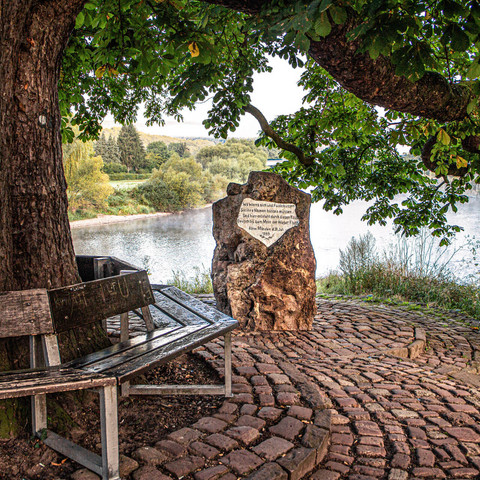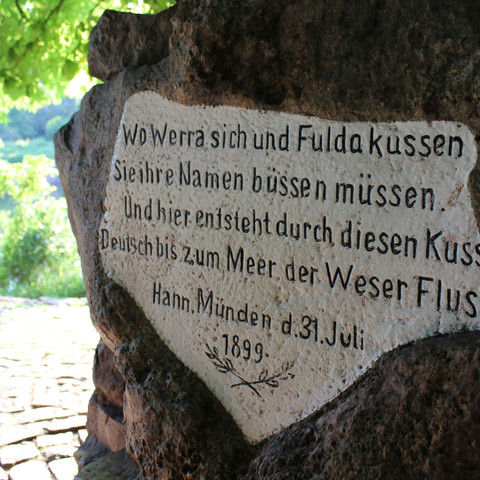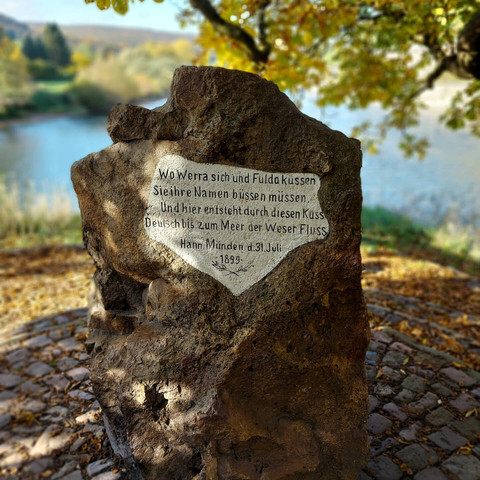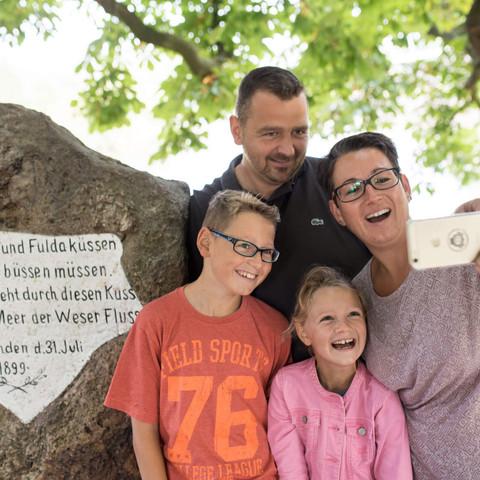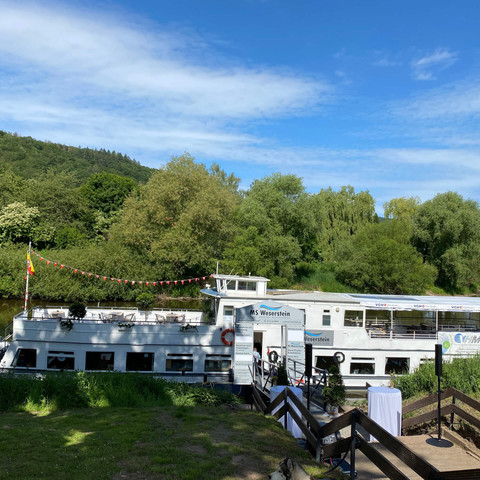The Weserstein marks the confluence of the Fulda and Werra rivers to form the Weser.
On the Tanzwerder in Hann. Münden, an island in two parts of the river, the Weserstein stands under a mighty chestnut tree. On it is to be read:
Wo Werra sich und Fulda küssen
Sie ihre Namen büßen müssen
Und hier entsteht durch diesen Kuss
Deutsch bis zum Meer der Weserfluss
Hann. Münden, d. 31. Juli 1899
Where Werra and Fulda kiss each other
They have to pay their names
And here arises from this kiss
German to the sea the Weser river
Hann. Münden, July 31, 1899
The stone, which weighs 70 hundredweight, was donated by the Münden entrepreneur Carl Natermann and his son, who wrote the saying that is known far beyond the borders of Hann. Münden.
The stone is made of local freshwater quartzite. Since 1899 the stone stands at the place of origin of the Weser, which flows into the North Sea after more than 450 km near Bremerhaven. Since then, the Weserstein has been a popular sight among visitors to Hann. Münden.
Since the year 2000, a new Weserstein has stood only a few meters from the much-quoted Weserstein of 1899. On it, there is an inscription on which the creative artist Nedko Solakov humorously reports about the confluence of the Fulda and Werra rivers. The installation of the new Weser stone took place within the framework of an outdoor project of the EXPO 2000 in Hannover.
The Weserstein is located only a few minutes walk from the old town of Hann. Münden and is ideal for a short detour during a visit. From here, the visitor also has a good view of the Weserliedanlage on the southwest slope of the Questenberg.
Between May and October, boat tours depart daily from the Weserstein, inviting you to discover the idyllic Weserbergland from the water.

